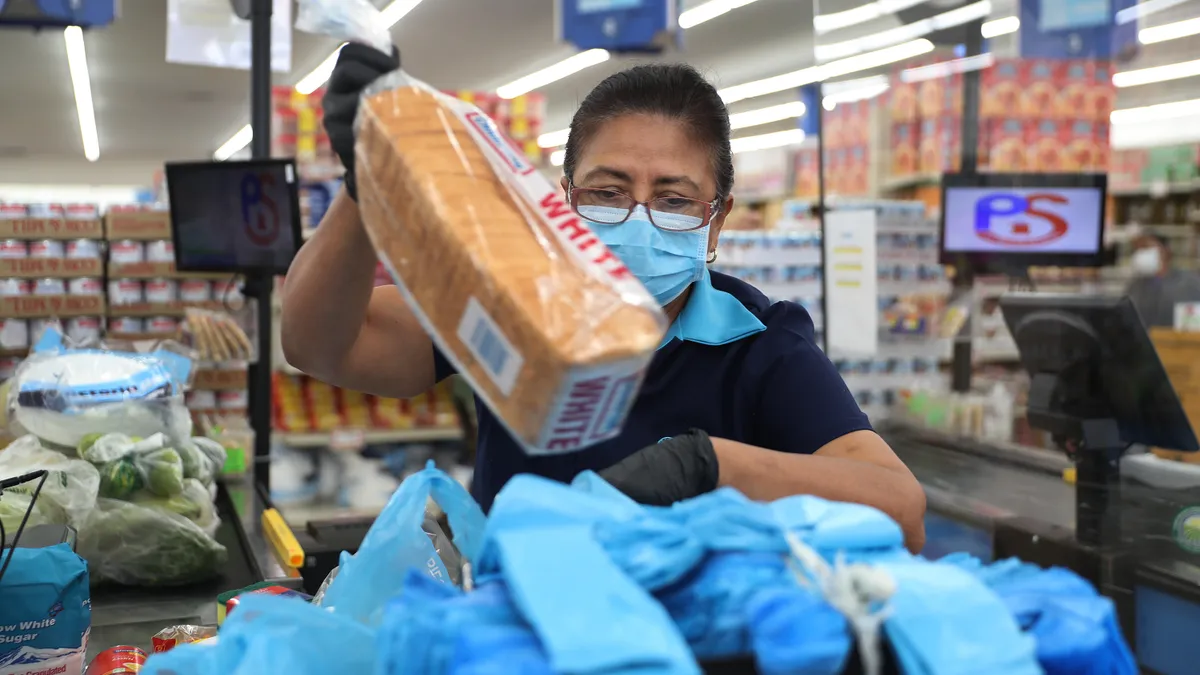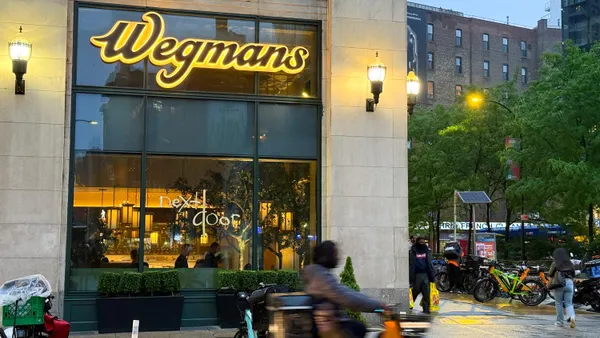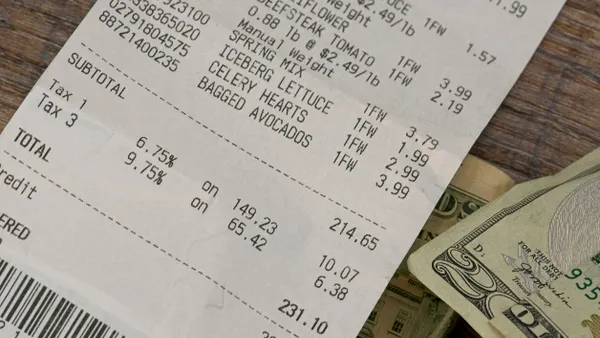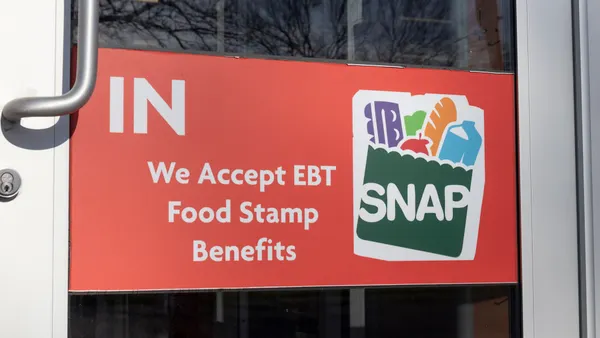Dive Brief:
- Many independent grocers saw sales rise an average of 17% in fiscal year 2020 that ended March 31, 2021, according to a joint study by the National Grocers Association (NGA) and FMS Solutions.
- Independent grocers also managed to increase margins and pay down debt during the pandemic year as they charted record-high levels of store openings and remodels.
- Despite the financial shot in the arm 2020 provided, independent grocers say they’re still facing significant pressures in hiring and in competing with large chains, with the NGA repeatedly calling for enforcement of antitrust laws.
Dive Insight:
The study conducted by the NGA and FMS Solutions shows that independent grocers saw record sales in 2020 and are piling a significant amount of those gains back into their businesses.
“All of grocery retail had record sales in 2020, but the pandemic brought consumers back to independent grocers in record numbers,” Robert Graybill, FMS CEO and president, said in a statement.
In addition to the double-digit average sales increase, independent grocers were able to keep those sales ahead of steep increases in wages, safety equipment and other expenses. Total expenses as a percentage of sales in 2020 was 26.9%, down from 28.8% in 2019.
Average transaction size rose to $31 while margins increased to 28.4%, driven by categories like dry grocery, dairy, general merchandise and alcohol sales. That spurred record net profit before taxes, which rose to 5.02% compared to 1.05% in 2019.
Top-performing independent grocers, which were those that excelled at managing expenses, according to NGA, were able to realize gains that were significantly higher than the average. Those in the top 25th percentile of net profits before taxes increased that metric by 9.8%, which was twice the total average.
Independent grocers are using the gains to press their advantage, with 62% increasing their capital expenses. Store openings and remodels reached their highest level in years, the study concluded, as retailers also paid down long-term liabilities and improved their debt-to-equity ratios.
Earlier this year, the NGA reported that independent grocers account for 33% of U.S. grocery sales, up from 25% a decade ago.
However, hiring challenges could impact future gains for independent grocers, which are often unable to match the pay and benefits offered by large competitors. Seventy-one percent of independent grocers surveyed by the NGA and FMS said hiring during the pandemic is a challenge, and 64% said the health crisis has had a negative impact on retention.
Despite the fact that their growth in net sales closely rivaled that of national competitors Kroger and Albertsons, those chains are setting the table for future growth with investments in online service that many independent operators can’t match. Large chains are also accelerating their rollouts of retail media networks, private label assortments and other advantages.
The NGA claims large retailers have unfair built-in advantages that independent grocers don’t, and the trade association has lobbied Congress to introduce bills aimed at strengthening antitrust legislation. On Thursday, the organization announced that it has joined with other independent business associations to form a coalition aimed at encouraging the enforcement of anti-competitive practices and the investigation of industry practices that they claim amount to economic discrimination.











